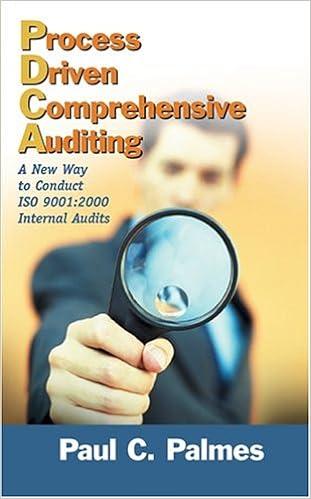Question
Sweeten Company had no inventories at the beginning and end of March. The company has two manufacturing departments---Molding and Fabrication. It has two products --Product
Sweeten Company had no inventories at the beginning and end of March. The company has two manufacturing departments---Molding and Fabrication. It has two products --Product P and Product Q. The following additional information is available for the company as a whole and for Products P and Q (all data and questions relate to the month of March):
|
|
| Molding | Fabrication | Total |
| Estimated total machine-hours used | 2500 | 1500 | 4000 | |
| Estimated total fixed manufacturing overhead | $10,000 | $15,000 | $25,000 | |
| Estimated variable manufacturing overhead |
| $3,500 | $3,300 | $6,800 |
| Predetermined variable manufacturing |
|
|
| |
| overhead per machine-hour | $1.40 | $2.20 | $1.7 | |
|
|
|
| Product P | Product Q |
| Direct materials | $13,000 | $8,000 | ||
| Direct labor costs | $21,000 | $7,500 | ||
| Actual machine-hours used: | ||||
| Molding | 1,700 | 800 | ||
| Fabrication | 600 | 900 | ||
| Total | 2,300 | 1,700 |
Sweeten Company had no underapplied or overapplied manufacturing overhead cost during the month.
Required
Complete all calculations using excel formulas and cell references and use the excel template provided for this case-based assignment.
Part 1: Perform a basic cost analysis using different assumptions about the costing method used. Assume that for both methods, the company adopts machine hours as the allocation base.
Method A: The company uses a single, plantwide predetermined overhead rate.
Method B: The company uses [two] departmental overhead rates.
Basic Cost Analysis:
1) What was the company's plantwide predetermined overhead rate? What were the departmental overhead rates for the Molding Department and the Fabrication Department?
2) How much manufacturing overhead was applied to Product P and to Product Q? Under method A? Under method B?
3) What was the total manufacturing cost assigned to Product P and Product Q? Under method A? Under method B?
4) What was its unit product cost
a) If Product P included 20 units? Under cost method A? Under cost method B?
b) If Product Q included 30 units? Under cost method A? Under cost method B?
What was Sweeten Company's cost of goods sold for March? Under method A? Under method B?
Part 2: Explore how differences across the costing methods change planned pricing if the company applies a cost-plus pricing method that uses an 80% markup of total manufacturing cost. For this exploration you will need to apply the cost-plus pricing method to the product costs derived from the two different costing methods.
1) What selling price would the company establish for Product P and Product Q (i.e. for the entire Product)? Under costing method A? Under costing method B?
2) What would the selling price for Product P and Product Q be when stated on a per unit basis? Under costing method A? Under costing method B?
Step by Step Solution
There are 3 Steps involved in it
Step: 1

Get Instant Access to Expert-Tailored Solutions
See step-by-step solutions with expert insights and AI powered tools for academic success
Step: 2

Step: 3

Ace Your Homework with AI
Get the answers you need in no time with our AI-driven, step-by-step assistance
Get Started


